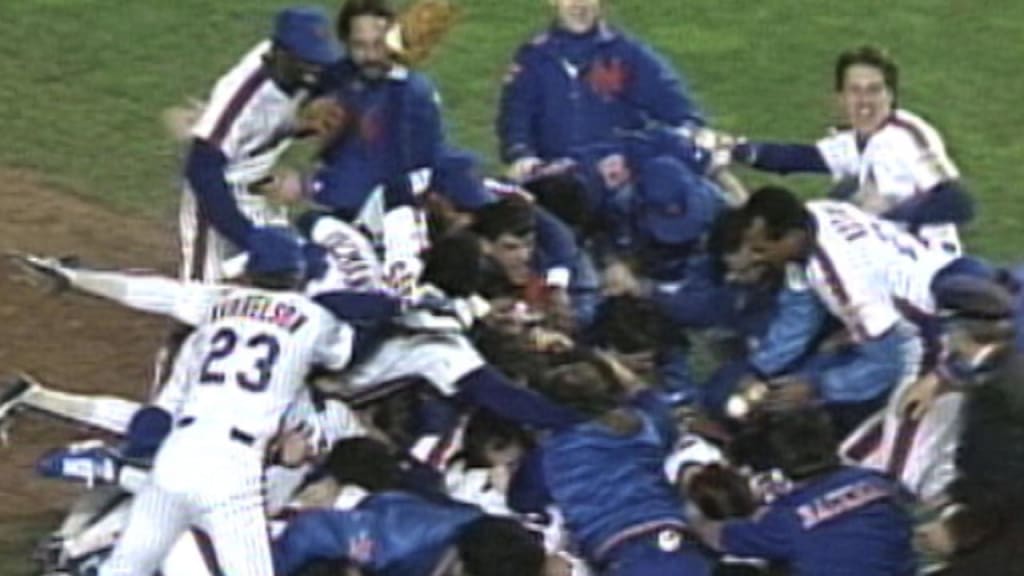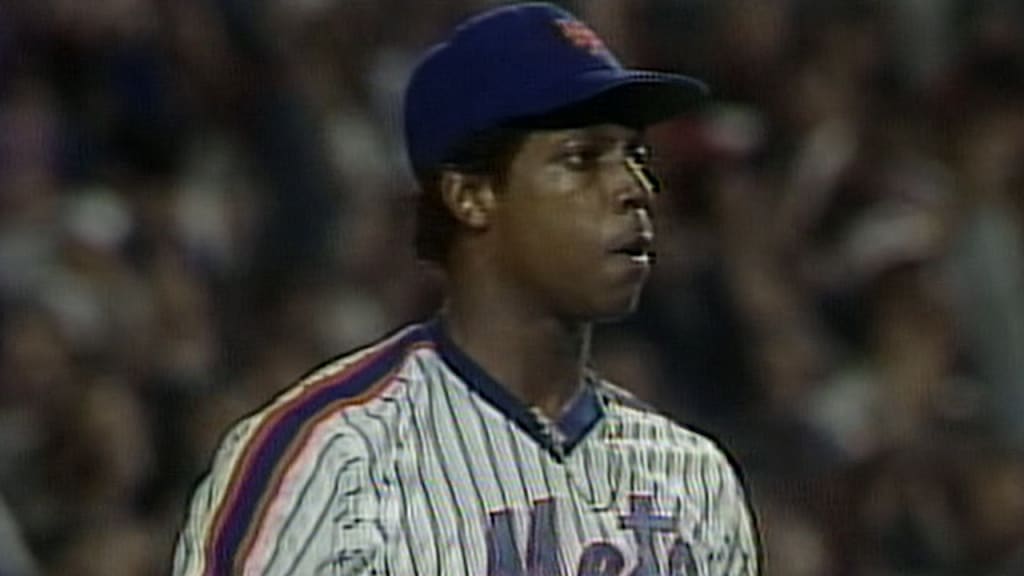New doc captures excitement of '86 Mets
This browser does not support the video element.
The first two hours of Nick Davis’s fine documentary on the 1980s Mets, “Once Upon A Time In Queens,” will have their broadcast premiere on Tuesday at 8 p.m. ET on ESPN, followed by the second two hours of the film on Wednesday at 8 p.m. ET.
And if ever there was a team that practically demanded a film like this, it is those Mets. Just because there has never been a team like it, or a time like they gave New York City, especially in 1986, when they became the second team in Mets history to win it all.
There have been other New York teams that won more games than the 108 the ’86 Mets won. But there has never been a more colorful team, or a more entertaining team, or a team that owned New York the way that group did.
Not one.
“I tell people all the time,” Dwight Gooden was saying on Friday night, after we had watched the first hour of Nick Davis’ film at the Hamptons Doc Festival in Southampton, N.Y. “You had to be there to understand what it was like to be in the city then, for everybody.”
"The city was coming back,” Nick Davis, a lifelong Mets fan, said, “Wall Street was coming back. I like to say that the bulls were running wild in the mid-1980s. But, man, so were my Mets.”
His story about the Mets really begins in very bad times for them, and for the city, in the 1970s. The film powerfully captures what it was like when Tom Seaver, now and forever the greatest Met of them all, was traded away to the Cincinnati Reds. But then a few years later along came Frank Cashen, out of the great baseball culture of the Orioles, one of the great baseball men of all time, to begin building the team that won the way it did in ’86, and looked set up to win more World Series, but never did.
This browser does not support the video element.
Before long, Davey Johnson, who had played on the Orioles team that lost to the Miracle Mets in 1969, was the perfect manager for this group of players. Really, though, the stars of the film and of those Mets, are four compelling players that Nick Davis refers to as “the tentpoles”:
Gooden. Darryl Strawberry. Keith Hernandez. The late Gary Carter.
Gooden and Strawberry came out of the farm system, and looked like two of the most thrilling young baseball talents of all time, before all the trouble with drugs and alcohol began for them off the field, and began to alter their place in baseball history. Before that all happened, Gooden had a season -- 1985 -- when he looked as dominant as any pitcher who had ever lived: 24-4 and a 1.53 earned run average.
"A genius,” is the way Gooden’s teammate Ron Darling describes him in “Once Upon A Time In Queens.”
Darryl? By the time he was Rookie of the Year in 1983, before Gooden showed up at old Shea Stadium, they were already comparing him to a young Ted Williams. He was Rookie of the Year the same year that Hernandez, who would become the on-field leader of the team, who had once shared a National League MVP Award with Willie Stargell, showed up in a trade with the Cardinals. As gifted as Gooden and Strawberry were when they were young, it was Hernandez, known as Mex, who changed everything with the Mets.
This browser does not support the video element.
Then there was the trade Cashen made for The Kid, Gary Carter, who showed up at Shea in 1985, the season when the Mets chased the Cardinals all the way to the second-to-last series of the season (one of the most compelling regular-season series I’ve ever seen in person) before finishing second in the National League East. That Mets team ended up winning 98 games and not making the playoffs.
“Where was the Wild Card when we needed it?” Gooden said on Friday night, and got a big laugh from the crowd.
Then it all came together in 1986, when they dominated the National League and expected to dominate October as well. That was before their six-game series with the Astros, one that finally culminated with the 16-inning game in the Astrodome -- where Gooden had made his first big league start once as a teenager -- when the Mets finally won the pennant.
It was an afternoon game that brought New York City to a standstill as extra innings wore on. It was a different world. Nobody wanted to get on a train and go home at rush hour that day, because they didn’t want to miss the Mets -- those Mets -- winning the pennant. There were all these images later of fans standing on the sidewalk in front of places like Crazy Eddie’s, watching the last innings on televisions in the window.
“That was our Game 7 and we knew it,” Gooden said. “Because no way we were beating Mike Scott in the real Game 7.”
It was the postseason when Scott started twice against the Mets, pitched two complete games, gave up just one run, had an ERA of 0.50. But they didn’t have to face Scott, because they came from behind in Game 6 in the ninth, and finally won it in the 16th.
This browser does not support the video element.
That was even before the slow roller that Mookie Wilson hit rolled through Bill Buckner’s legs in the bottom of the 10th of another Game 6, two nights before the ’86 Mets won it all.
All of this is captured in Nick Davis’ fine film. If you weren’t there, now you can be.
“We were a lot of things,” Gooden said the other night as he was taken back in time, to that time. “But we could play the damn game.”

